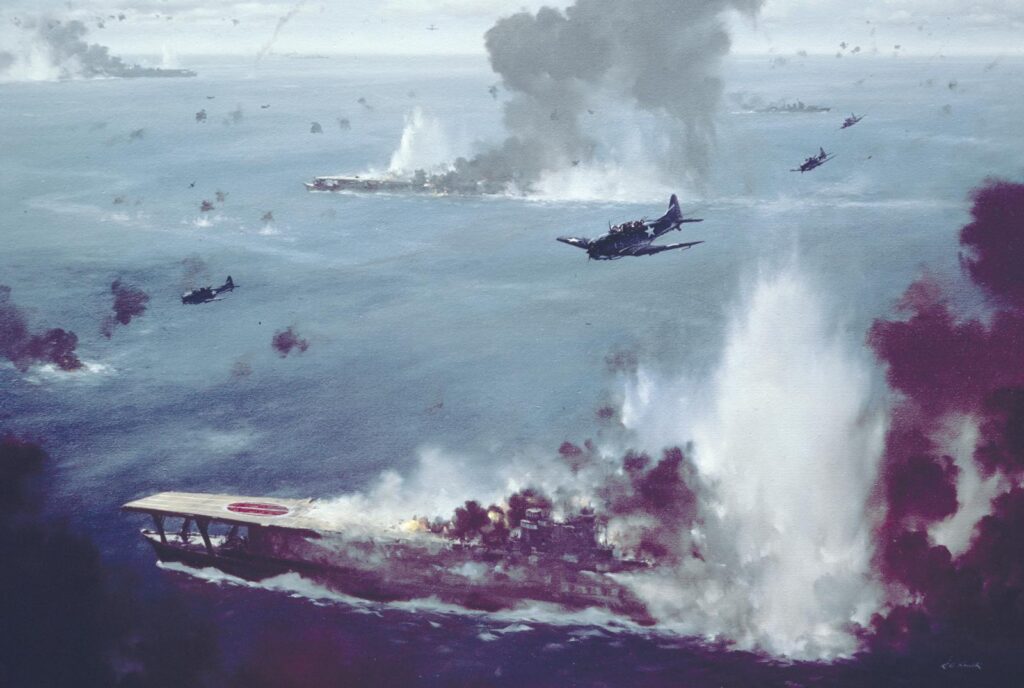Today is the 81st anniversary of the Battle of Midway. Some say that this battle was the turning point of the Pacific theater. However, in my opinion, the battle that took place a month earlier in the Coral Sea was the game changer because of the damage inflicted on the Imperial Japanese Navy (IJN) carriers Shōkaku and Zuikaku. Both vessels were unable to participate in the Midway campaign. The allies also suffered a great loss when the carrier Lexington was scuttled and the Yorktown was heavily damaged. Amazingly, though, the Yorktown managed to limp back to Hawaii and spent 72 hours in drydock getting patched up in order to participate in the showdown in the Pacific.
Overall, the IJN had ten carriers total to the United States three carriers based in the Pacific. Six had participated on the attack at Pearl Harbor in December 1941. With that said, the Kidō Butai, which was down to four carriers instead of the six of the main force, was sent to Midway. Obviously, this would have been enough to ensure victory, but unbeknownst to Admiral Yamamoto, the Americans had cracked the IJN’s code used for the target they referred to as “AF.” Joseph Rochefort and his fellow cryptanalysts figured out that “AF” was Midway Atoll.
The main intention of the Kidō Butai was to sink the American carriers. They failed at Pearl Harbor, but after the Doolittle Raid on Japan’s home front, they decided to set what they thought was a trap in Midway. However, the sacrifice of many American pilots manning torpedo planes allowed the dive bombers to sink three carriers in less than ten minutes: the Kaga, the Soryū, and Admiral Nagumo’s flagship the Akagi. The fourth carrier, the Hiryū, kept fighting, and its planes took out the Yorktown. However, ironically, the Yorktown’s dive bombers disabled the Hiryū, leaving a great victory at hand. Admiral Tamon Yamaguchi and Captain Tomeo Kaku chose to go down with the Hiryū as it was scuttled with two torpedoes from an IJN destroyer.
Realizing that the United States had won a great victory, Admiral Spruance pulled back for the night because he didn’t want to risk his ships in a night battle. Yamamoto’s occupying force and reserve fleet retreated. The many losses of pilots, mechanics, and carrier personnel hampered the IJN’s ability to wage a counterattack in later battles. Those who survived the Battle of Midway were transferred to different areas and were told not to talk about it. The IJN treated the survivors as failures, which led to its downfall in the end.
Many books have been written on this historical episode; even a few movies have been made about it. I will leave the links at the bottom of this blog.
Shattered Sword by Jon Parshall and Anthony Tully:
http://www.shatteredswordbook.com/
Joe Rochefort’s War by Elliot Carlson:
Battle of Midway Tactical Overview – World War II | History:
Torpedo Squadron No. 8:
We Meet At Midway:


You must be logged in to post a comment.